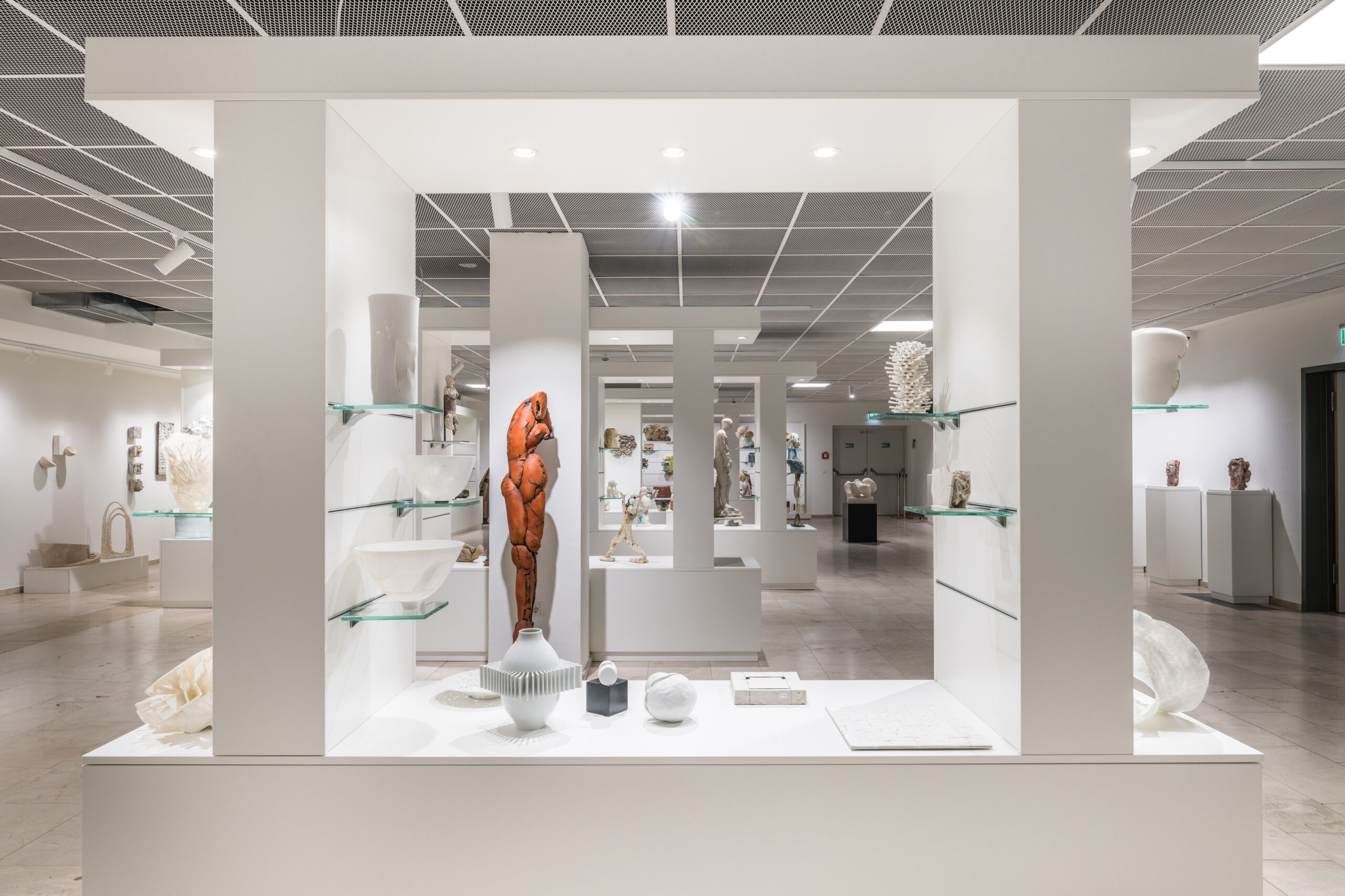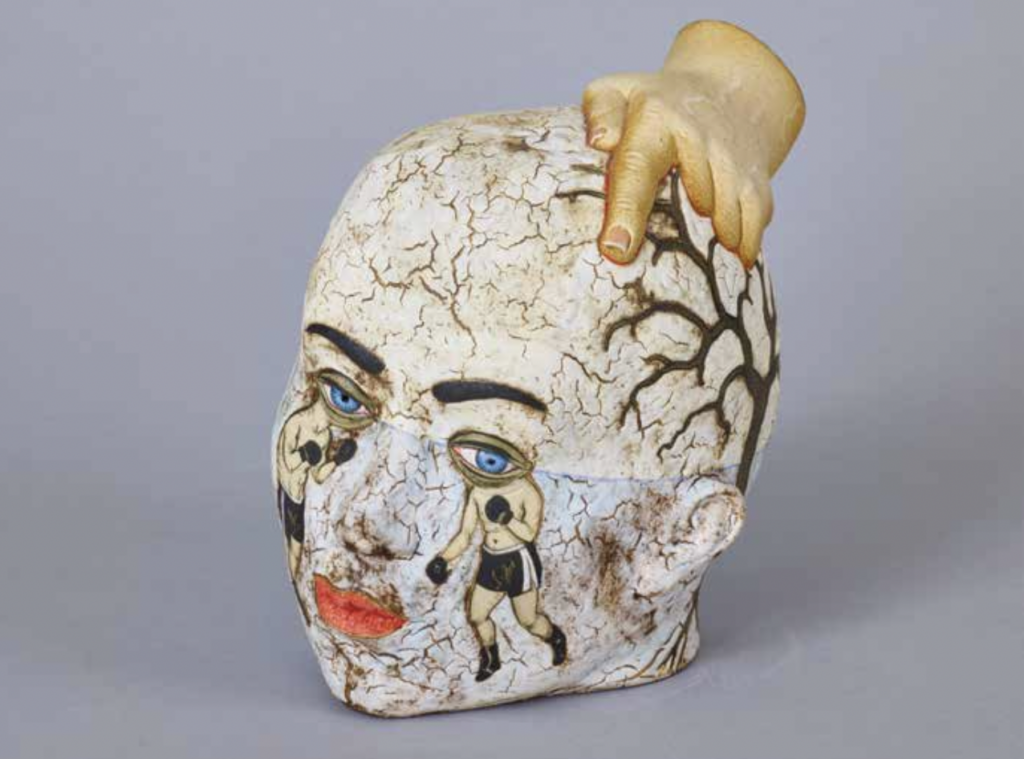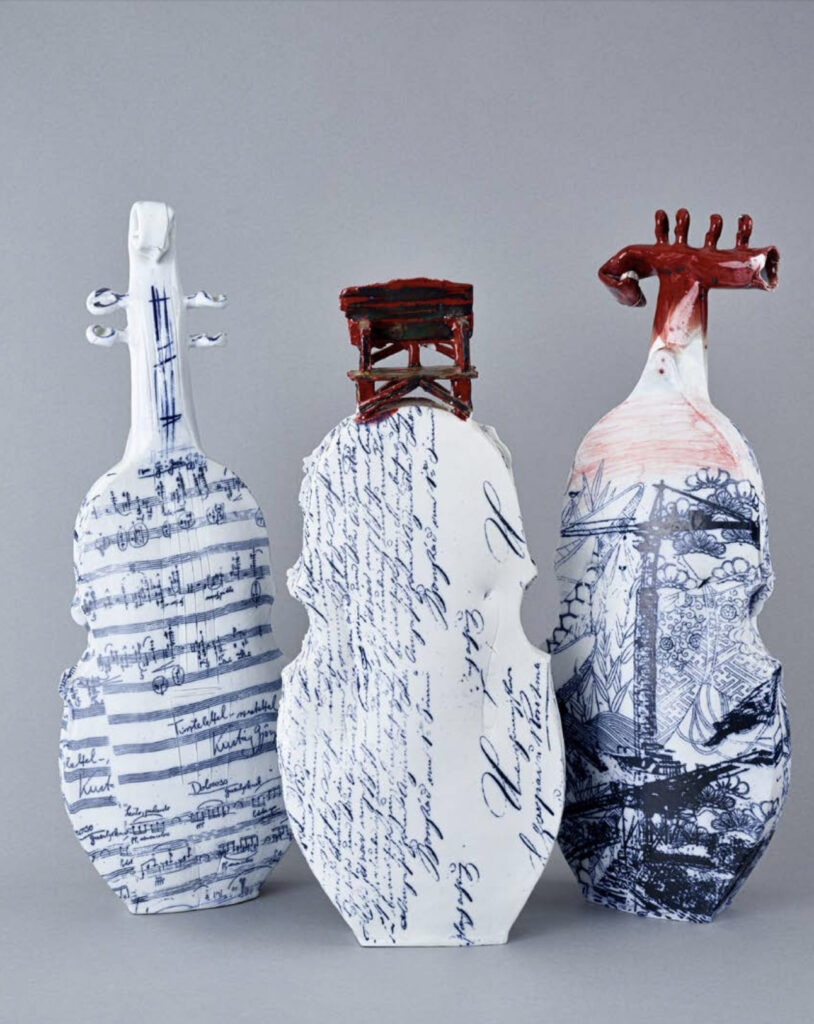


Located in the quaint town of Neunkirchen, Germany, a building with expansive modern glass windows and vermillion steel beams deviates from the traditional architectural landscape of its surroundings. The 300-square-meter museum is home to 400 ceramic sculptures by 150 artists representing 40 countries—all amassed by artist and ardent collector Hannelore Seiffert.
The recently opened Keramik Kunst Museum (KKM) Stiftung Hannelore Seiffert launched just last August, and although the museum has yet to reach a year since its inception, the collection of diverse works by notable ceramicists—Sergei Isupov, Akio Takamori, Beate Kuhn, and Marc Leuthold, to name a few—has been an enduring endeavor in development for over three decades.


It was never Seiffert’s intention to build a museum that eponymously boasts her name. In fact, there might not have been a museum at all if the director of the Städtische Galerie Neunkirchen hadn’t asked Seiffert to exhibit a selection of her collection in their gallery space back in 2018. Unbeknownst to all, the show would become the first flap of the butterfly effect that would transpire into the establishment of a museum.
The 2018 exhibition Brennpunkt Keramik garnered remarkable recognition and esteem, precipitating a sequel presentation two years later bearing the same title—Brennpunkt Keramik II. The continued enthusiasm for the second show prompted the gallery director to propose the idea of having Seiffert’s collection on permanent display for the public.

Hannelore Seiffert’s home is a cabinet of curiosities, crowded with a cornucopia of works—over 1,200 ceramic pieces by more than 400 ceramicists. Visitors are entranced, enamored, and enlightened while exploring and experiencing her extensive archive of contemporary ceramic history. Her collecting habits heightened from preoccupation to obsession, and as her collection grew, so did her house. After numerous reconstructions, expansions, and extensions, she reckoned with having to halt her collecting compulsions due to spatial impracticalities.
Initially reticent about sponsoring a museum, she accepted the proposal after experiencing an existential contemplation catalyzed by her upcoming 80th birthday. Realizing that with no children or family to inherit her collection, she needed to find a caretaker and a permanent home. On the occasion of her octogenarian celebration, she established the Hannelore Seiffert Foundation for International Unique Ceramics, and the development of the museum commenced.

Upon entering the Keramik Kunst Museum, visitors are confronted by a stark, white-lit room with bursts of hues dispersed throughout the space. Unlike traditional museums that follow the curatorial principle of arranging works by provenance or period, the pieces in Seiffert’s museum are organized by their formal qualities—colors, concepts, shapes, and themes.
One wall by the entrance of the main gallery displays figures on plinths—a kneeling Japanese woman sculpted by Akio Takamori sits beside an ominous bust by Christof Reichenbach and an obscured, ghostly portrait by Jindra Vikova. On the opposite side, geometric clay abstractions include Karin Flurer-Brünger’s pod-shaped vessel, perched adjacent to a luminous turquoise blobject by Peter Beard. The eye then wanders to a titillating fungal piece by Ursula Commandeur and an architectural assembly of mixed-media slices by Kyra Spieker.
Moving further into the space, the works are divided by modular shelves and again, unlike traditional museums, the works are displayed sans glass barriers, creating an intimate experience akin to what Seiffert experiences at home. One section flaunts white monochromatic works exhibiting artists such as Sangkyoung Lee, Frank Schillo, Paula Bastiaansen, and Kyungmin Lee. Adjacent, a wall adorned with monochromatic black sculptures transitions into another area where exquisite sculptures combine black and white—by artists including Michael Cleff, Carla de Vrijer, and Suku Park, among others. Although unified in color and medium, each work stands uniquely distinct in tone, texture, form, and experience—highlighting both the universality of clay and the individuality of the artist.



Icy washes of blue sculptures splash one area of the gallery, while a curious installment of ships by Frank Steyaert anchors another. Dozens of figures are concentrated in the center: Ucki Kossdorff’s vibrant and sensuous nude woman contrasts with the mythical minotaurs of Imre Schrammel. Heidi Preuss Grew’s animalistic creatures embodying true love share a shelf with Eberhard Szejcecki’s endearing portrayal of the same subject. Alan Peascod’s totemic terra sigillata is stacked beneath Helmut Massenkeil’s stoic bust and Christy Keeney’s melancholy, ochre portrait.
Seiffert admits to having a particular penchant for figurative works, evidenced not only by the profusion of these pieces in the main gallery but also by the conjoined room dedicated to the works of figurative ceramicist Maria Geszler-Garzuly, one of Seiffert’s most collected artists and a dear friend.


A significant number of the works in the museum are by artists who have built profound friendships with Seiffert, making her initial hesitation about parting with her pieces an understandable concern. They aren't merely pretty objects or perceived investments but memories of past visits with artists, discoveries of new talents and innovations, and excitement for the expanding field of clay. Now, however, the museum serves as an extension of her home. She frequents the space, conducts monthly walkthrough tours, and regales visitors with her encyclopedic knowledge and personal anecdotes. The enjoyment she once experienced walking past the ceramics in her home every day is now shared with the public through an extraordinary curation.
Seiffert's keen eye has resulted in a vast collection of works by artists who have left their mark on 20th and 21st-century ceramics—many of whom may not have reached great prominence without the early financial and emotional support of collectors like Hannelore Seiffert.
Visit KKM Keramik Kunst Museum Stiftung Hannelore Seiffert at Marienstraße 2, 66538
Neunkirchen, Germany. Learn more about the museum and the collection on their website.
